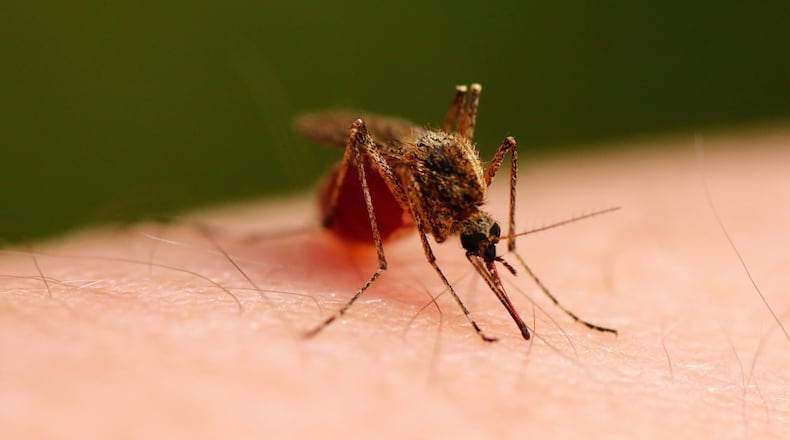It’s the first case of a human West Nile infection in Greene County since 2006, according to Amy Schmitt, Greene County public health nurse who investigates infectious diseases.
RELATED: Greene County officials take precautions after West Nile Virus detected in mosquito
So far this year, five people in Ohio have been infected with the West Nile virus, according to the Ohio Department of Health. In addition to the one case in Greene County, two people tested positive in Hamilton County, and one each in Clermont and Logan counties, according to state records.
This year, 29 counties have reported the presence of West Nile virus in mosquitoes, including Clark, Greene, Hamilton, Montgomery and Warren counties, according to state records.
In 2016, Ohio reported 17 human cases of West Nile virus. So far in 2017, 200 human cases of the virus have been reported across 28 states, according to statistics from the Greene County Public Health.
Click here to find statistics from previous years related to West Nile virus in Ohio.
Data shows West Nile infections are down this year in Ohio compared to last year, Schmitt said.
RELATED: West Nile Virus found in second sample of mosquitoes in Clark County
West Nile virus is a potentially serious illness, with about one in 150 people developing a severe illness, but around 80 percent of infected people do not show any symptoms.
RELATED: State reports first West Nile case in Southwest Ohio man
Those symptoms can include high fever, headache, neck stiffness, stupor, disorientation, tremors, convulsions, muscle weakness, vision loss, numbness and paralysis.
Schmitt said she had been investigating this one infection for about a week before it was confirmed as West Nile virus.
“This individual was sick enough to seek medical care with a physician,” she said. “It’s a viral infection, and that’s how it was discovered.”
The patient has a history of mosquito bites and got sick earlier this month, suffering from a high fever of 102 degrees, body aches, nausea, vomiting, headaches and a rash. The individual is feeling better now, about two and a half weeks after being infected, Schmitt said.
RELATED: West Nile Virus in Southwest Ohio: What you need to know
“The majority of individuals will recover without any consequence,” Schmitt said. “Fortunately, this individual is going to recover and do well. There are some individuals that become very sick, and that’s where the concern really is … One of our tasks is to prevent anyone else from being exposed and become sick with this viral infection.”
It’s not clear exactly where the individual became infected, but Greene County Public Health routinely traps and tests mosquitoes and sprays insecticide in neighborhoods to eradicate them.
A county health worker sprayed areas Wednesday along Willowcrest Road in Beavercreek.
The West Nile virus is spread by mosquitoes and birds, according to Greene County Environmental Health Director Jeff Webb.
“Mosquitoes normally feed on birds,” Webb said. “They infect the birds, then the birds travel somewhere and then other mosquitoes bite. They pick it up and they continually pass the virus on.”
Greene County Public Health recommends a few actions to avoid mosquito bites:
- Wear long pants, long sleeve shirts, shoes and socks if you're outside when mosquitoes are most active between dusk and dawn
- Wear light-colored clothing, which is less attractive to mosquitoes
- Use EPA-registered mosquito repellent
- Install or repair screens on windows and doors to keep mosquitoes out of your home
